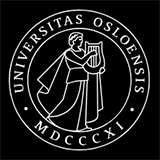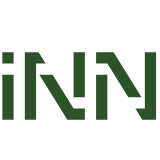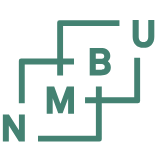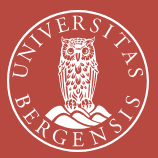The University of South-Eastern Norway (USN) is a public university in Norway. It was established in 2018 through the merger of several higher education institutions. Here are some key information about the University of South-Eastern Norway:
Overview
Established: May 4, 2018
Institutional Nature: Public
Main Campus Location:
Bø, Telemark
Porsgrunn
Notodden
Rauland
Drammen
Hønefoss
Kongsberg
Horten
History
USN was established on May 4, 2018 through the merger of Telemark University College, Buskerud and Vestfold University College and some other higher education institutions.
Each of these predecessor institutions has a rich historical background that can be traced back to the mid-20th century.
School Strength
USN has approximately 18,000 students and approximately 2,000 faculty and staff.
It offers undergraduate, master's and doctoral programs covering a variety of subject areas.
It enjoys a good reputation in the fields of technology and engineering, health sciences, social sciences, education, arts and humanities.
The school emphasizes practical learning and maintains close ties with the industry to ensure that the course content meets industry needs.
Educational philosophy
Emphasis on practical learning, encouraging students to develop skills through internships and real projects.
Focus on interdisciplinary cooperation, especially between different majors.
Attach importance to international education, recruit international students, and provide courses taught in English.
Committed to promoting sustainable development and social justice.
Subject settings
Bachelor's degrees:
Technology and Engineering
Health Sciences
Social Sciences
Education
Arts
Humanities
Master's degrees:
Technology and Engineering
Health Sciences
Social Sciences
Education
Arts
Humanities
And other related fields of master's programs
PhD programs:
Technology and Engineering
Health Sciences
Social Sciences
Education
Arts
Humanities
And other related fields of doctoral programs
English-taught programs:
Most master's and doctoral programs are taught in English to attract international students.
Professional Direction
Technology and Engineering: including mechanical engineering, electrical engineering, computer science, information technology, etc.
Health Sciences: covering nursing, public health, physical therapy, etc.
Social Sciences: including psychology, social work, political science, etc.
Education: involving primary education, secondary education, special education, etc.
Art: including music, fine arts, design, etc.
Humanities: including history, philosophy, linguistics, etc.
Campus
Bø, Telemark Campus:
Located in the heart of Telemark County, providing a vibrant student community.
Porsgrunn Campus:
Located in one of the largest cities in southeastern Norway, providing education in engineering technology.
Notodden Campus:
Located in a beautiful natural environment, providing a vibrant student community.
Rauland Campus:
Famous for its unique campus environment and outdoor activities.
Drammen Campus:
Located in the center of Drammen, providing an interactive and warm learning environment.
Hønefoss Campus:
Located in the city of Hønefoss, providing a variety of educational opportunities.
Kongsberg Campus:
Located in an international technology city, providing a close-knit student community.
Horten Campus:
Located near Viking-era burial sites, it offers a modern and inclusive learning environment.
International Cooperation
USN is actively involved in international exchange programs and has established partnerships with many higher education institutions around the world.
Exchange student programs are provided to promote international perspectives and cultural exchanges among students.
As a member of the European University Association (EUA) and other international organizations, USN plays an important role in international education and research.
Expenses
For EU/EEA students, USN is usually free, but a small registration fee is required.
For non-EU/EEA international students, tuition fees vary depending on the major, generally between 6,000 and 14,000 euros per year. The specific fees should be consulted directly with the school or visit its official website for the latest information.
In terms of living costs, the living costs in the cities where the campuses are located are relatively moderate, but accommodation, food and personal expenses still need to be considered.
Application requirements
Applicants usually need to have a high school diploma or equivalent.
You need to pass an entrance exam or interview to demonstrate your interest in the chosen major and your ability to work in a related career.
The English language proficiency requirement is usually level B2 (according to the Common European Framework of Reference for Languages CEFR), although some programmes may require higher proficiency.
-

University of Oslo
-

OsloMet - Oslo Metropolitan University
-

University of South-Eastern Norway
-

Nord University
-

University of Inland Norway
-

Norwegian University of Life Sciences
-

University of Bergen
-

University of Stavanger
-

University of Agder
-

Norwegian University of Science and Technology
-

Mesoamerican University
-

Istmo University
-

Mariano Galvez University of Guatemala
-

Regional University of Guatemala
-

Galileo University
-

Francisco Marroquín University
-

Rafael Landívar University
-

University of the Valley of Guatemala
-

University of San Carlos of Guatemala
-

Technological Institute of Tlaxcala Plateau
-

Golfo University
-

Technological University of South Sonora
-

Technological University of Huejotzingo
-

Tizimín Institute of Technology
-

Chilpancingo Institute of Technology
